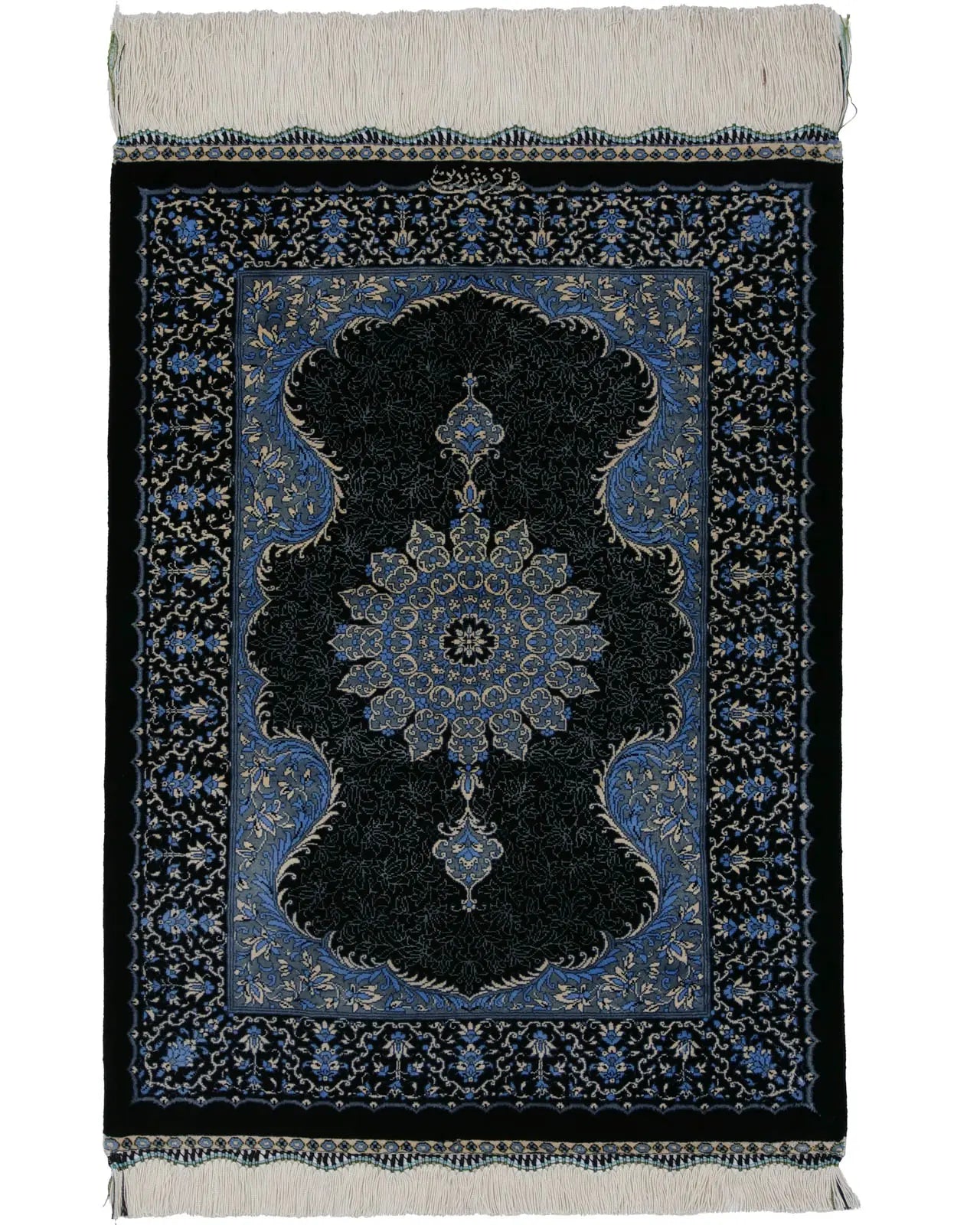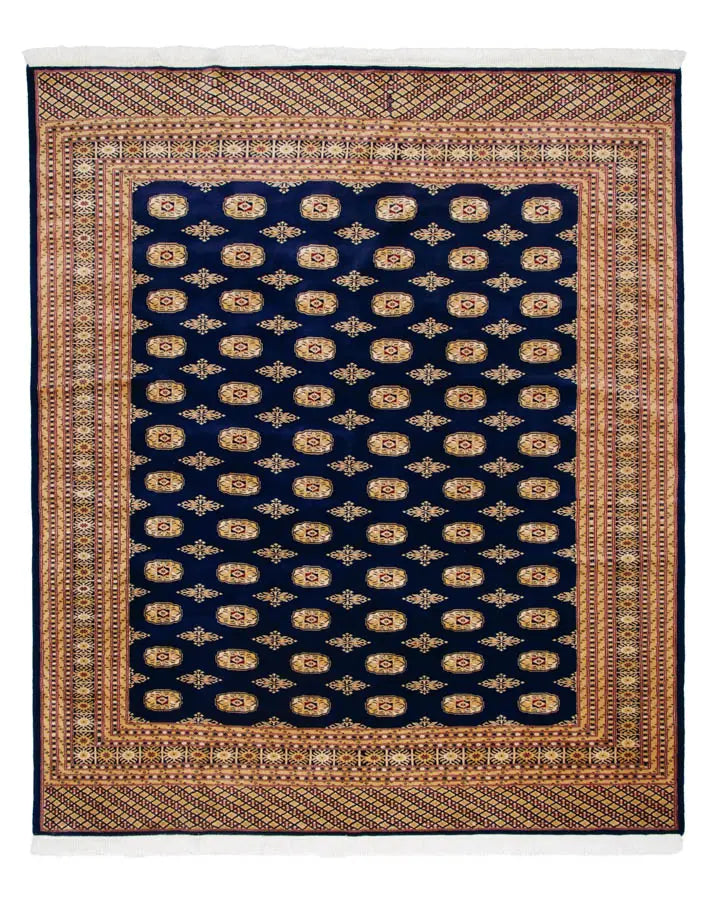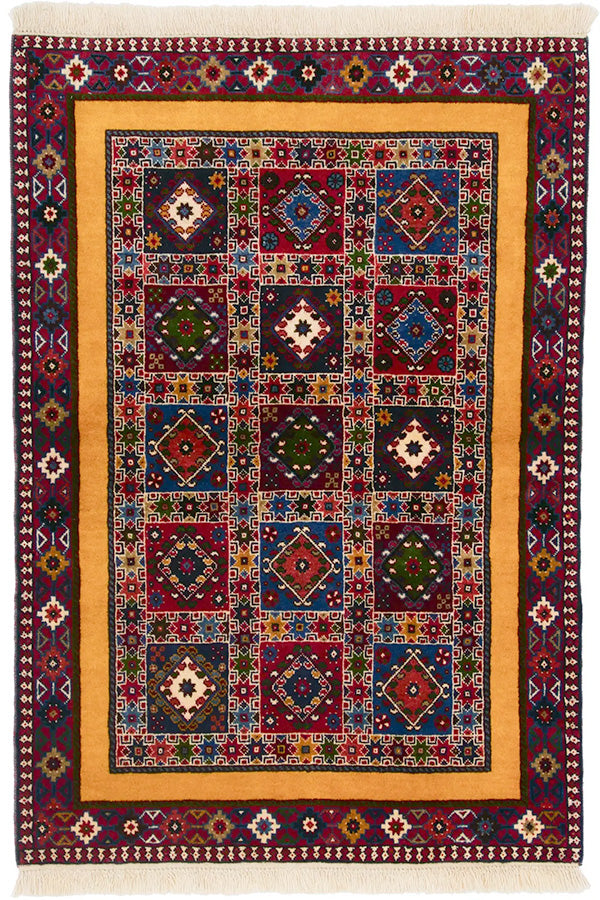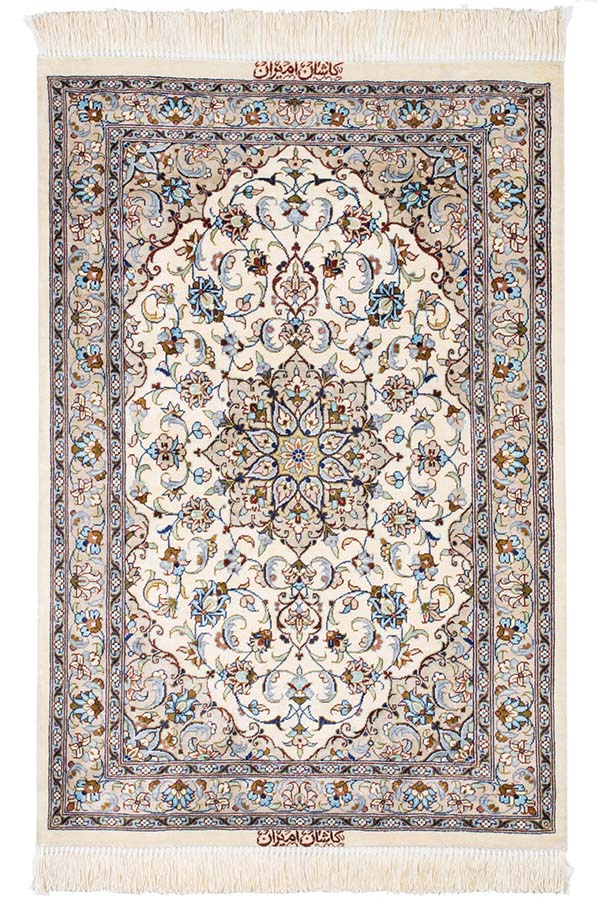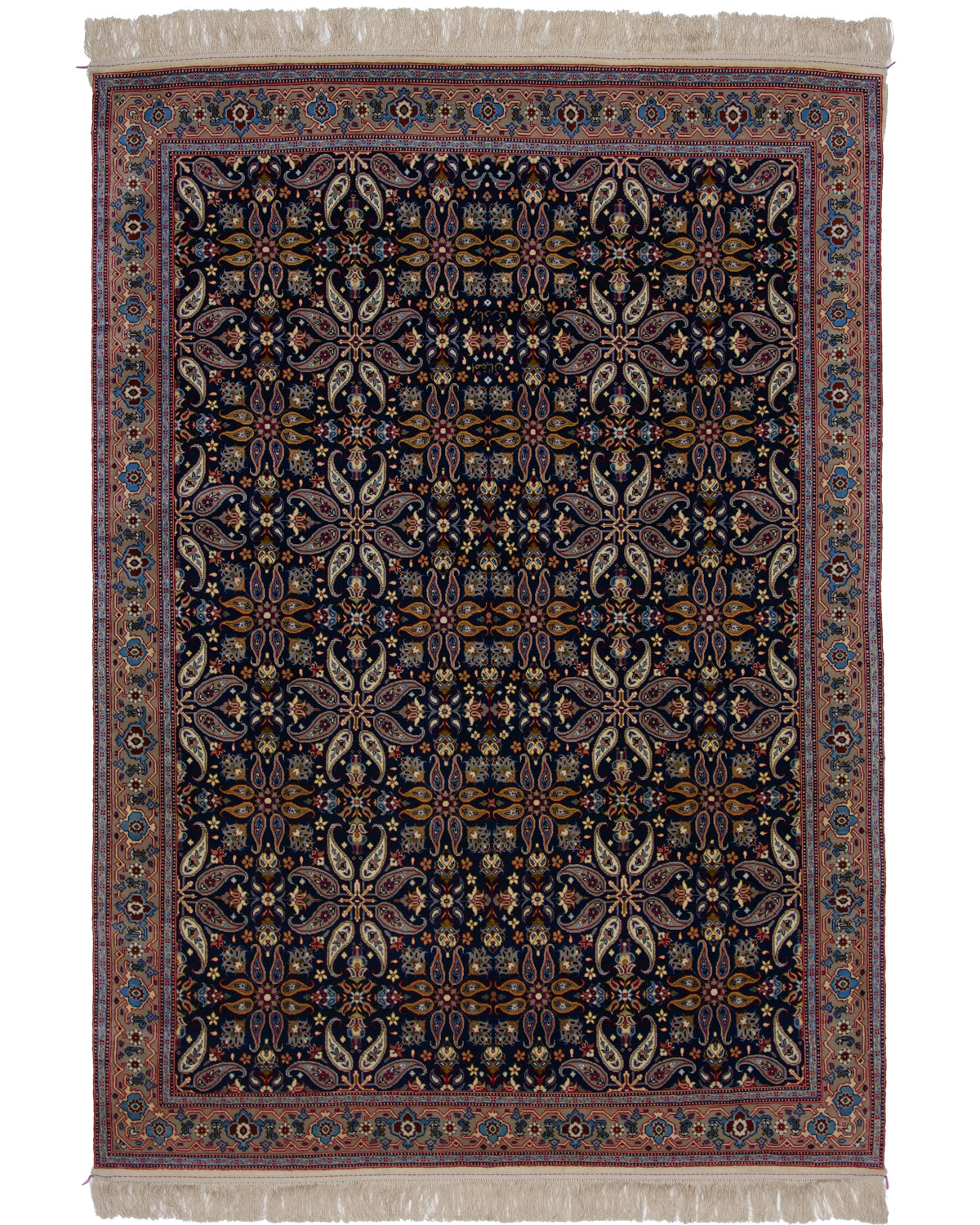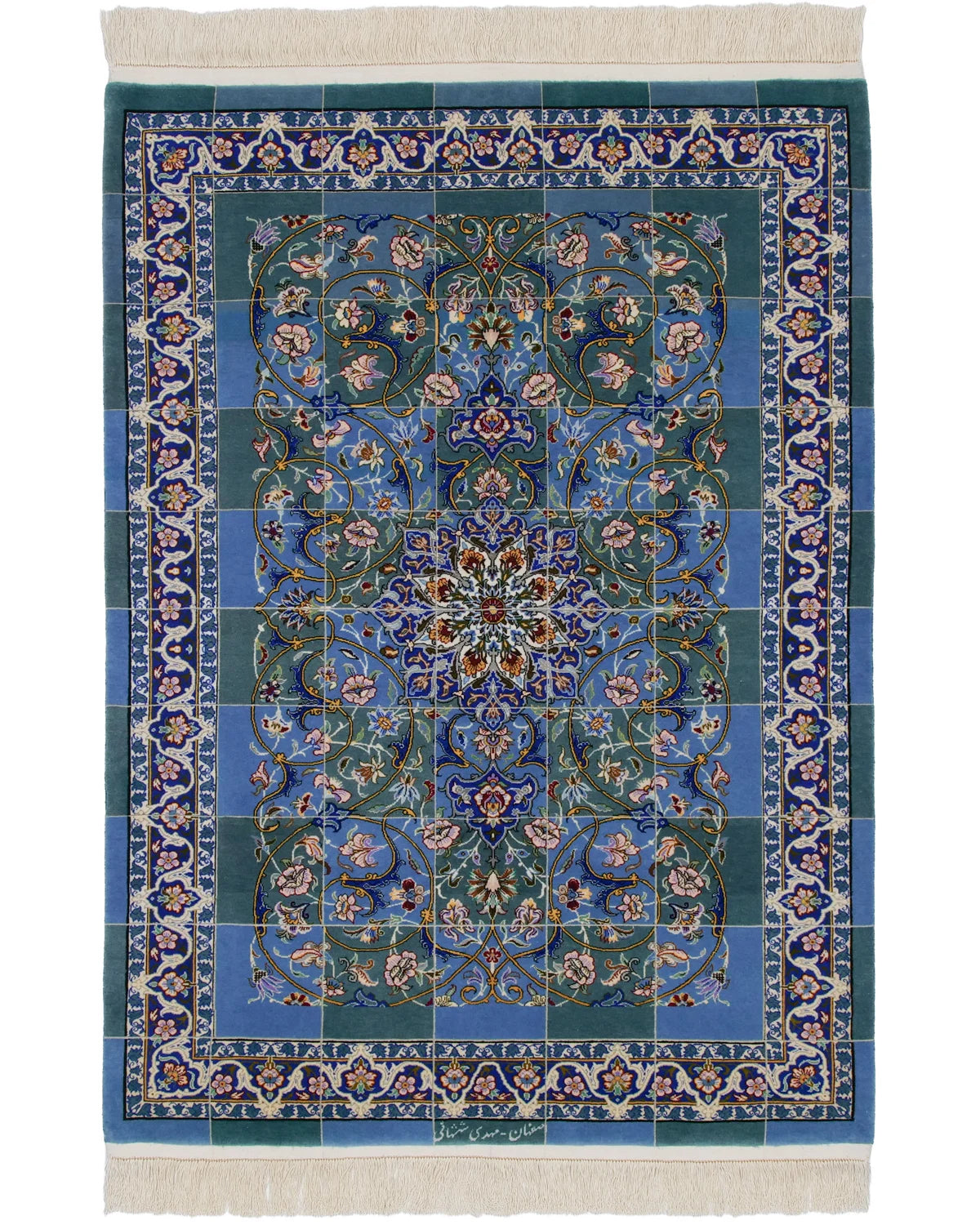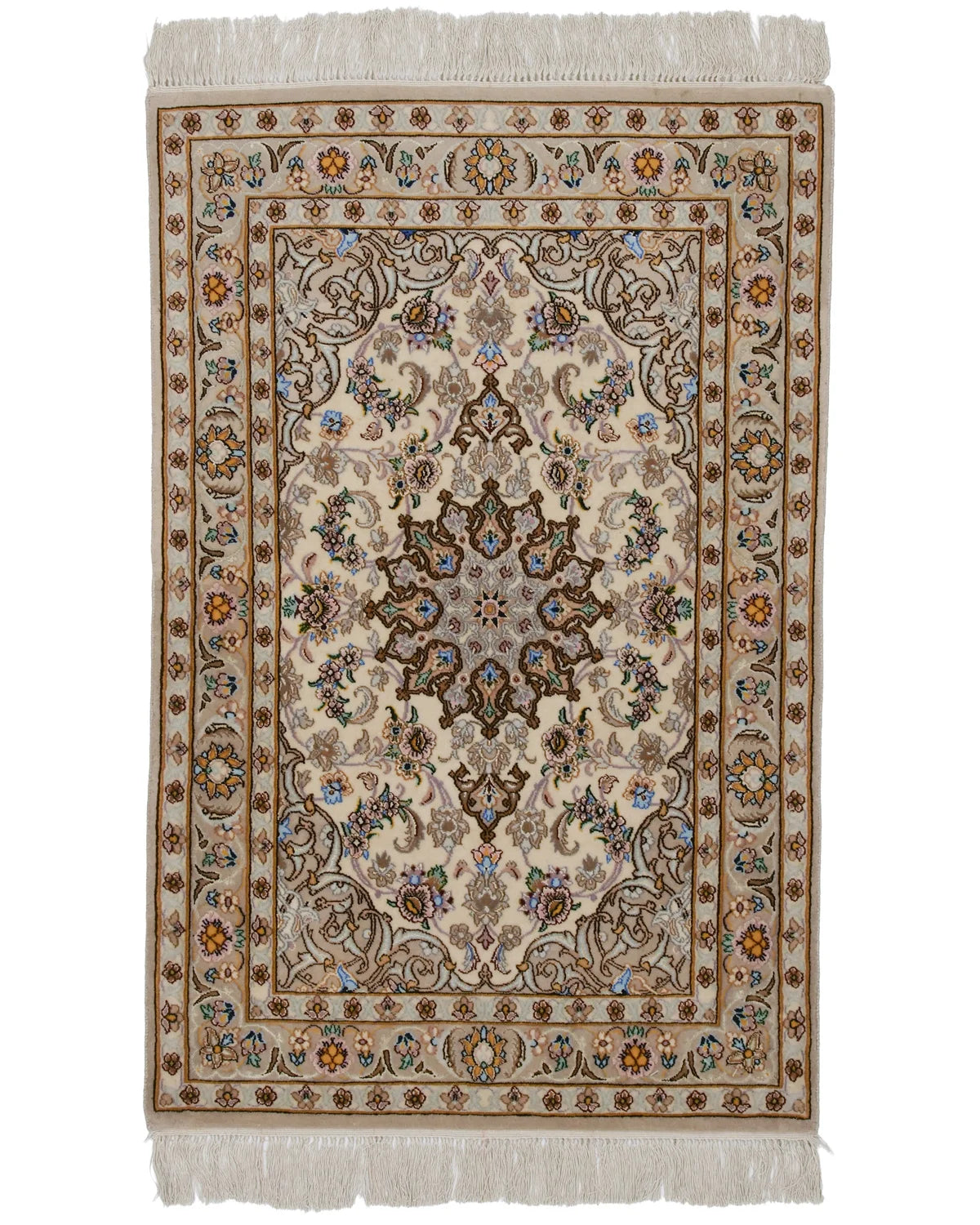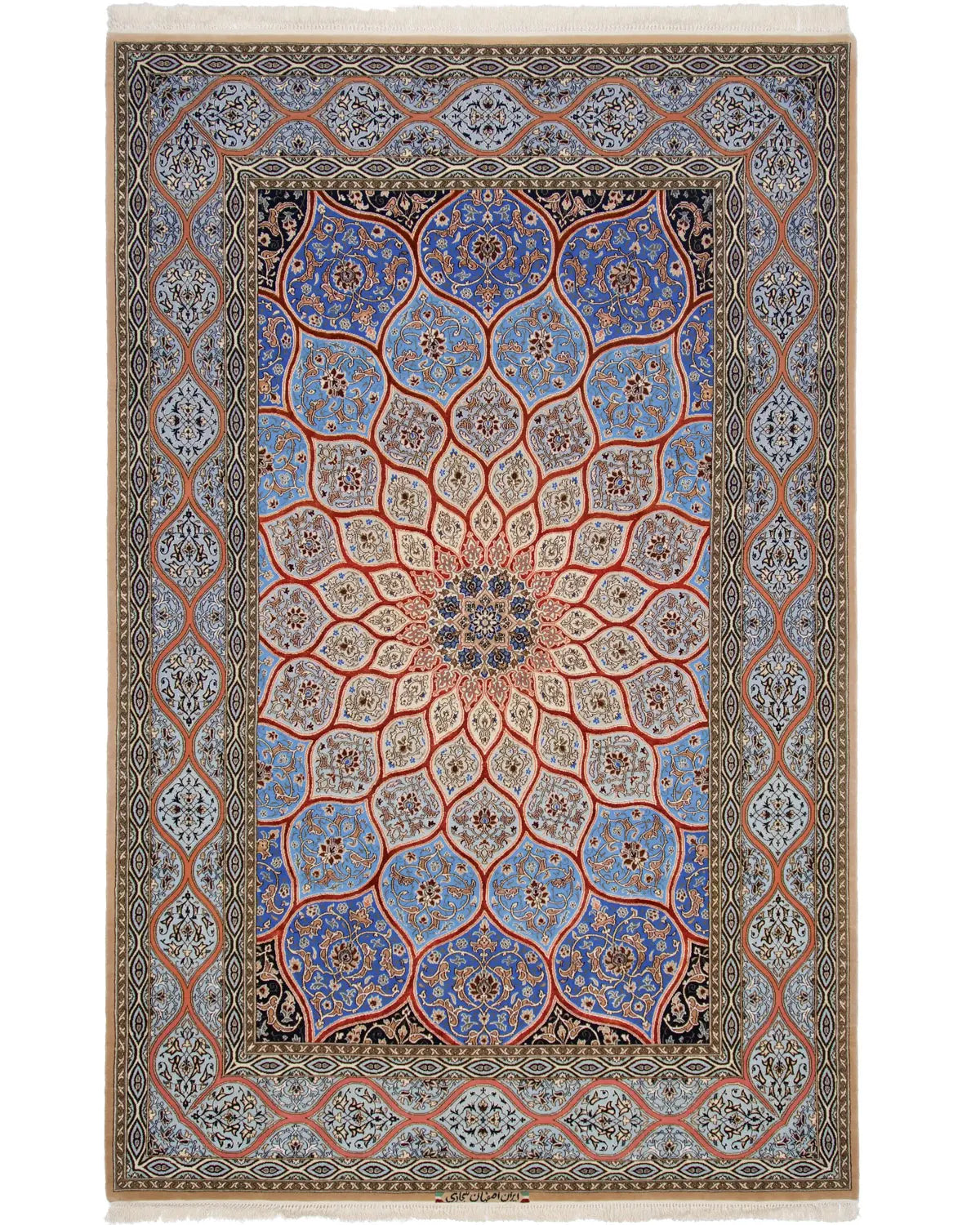
Isfahan
Type: Persian carpet
Location: Central Iran (formerly Persia)
Knot Density: 650,000 - 850,000 knots per square meter
Features: Center medallion, floral pattern, very high knot density
Pile: thin, very high knot density and quality
Isfahan (also spelled Esfahan) is a UNESCO World Heritage city located in central Iran. Historically celebrated as a cultural and artistic capital, the city flourished during the late 16th century when Shah Abbas I made it the capital of the Safavid dynasty. With the construction of magnificent mosques and public squares, Isfahan came to be known as "Half the World."
Monuments from this golden era—such as Naqsh-e Jahan Square (formerly Royal Square), the Imam Mosque, and the Ali Qapu Palace—are now listed as UNESCO World Heritage sites.
Among Isfahan’s many cultural treasures, its world-renowned Persian carpets stand out as a symbol of refined craftsmanship.
Persian Carpets and Isfahan
Persian carpets refer to the traditionally handwoven rugs produced across Iran, with five major centers being Tabriz, Nain, Qom, Kashan, and Isfahan.
Isfahan carpets are known for their refined urban designs and exceptional knot density. Unlike tribal rugs—often inspired by nomadic life and nature—Isfahan rugs reflect a more sophisticated, metropolitan aesthetic and are considered among the highest quality in the Persian carpet tradition.
History
Isfahan reached the height of its artistic glory during the 16th and 17th centuries under the Safavid dynasty. Shah Abbas I, a patron of the arts, established royal workshops and invited master weavers from surrounding regions. These workshops produced luxurious carpets for royalty and nobility, resulting in masterpieces that are still revered today.
However, this golden age came to an abrupt end with the Afghan invasion of 1722, which devastated the city. The loss of royal patronage led to the closure of all weaving workshops, and the fall of the Safavid dynasty marked a temporary end to Isfahan's carpet production.
In the late 19th and early 20th centuries, Persian carpet-making saw a revival, and Isfahan re-emerged as a major center. The return of master weavers—including those who had relocated from Kashan—brought about a renaissance in fine rug production.
One of the most influential figures during this revival was the renowned Seirafian family, whose dedication and artistry helped restore global recognition for Isfahan carpets.
Knot Density (Finely Woven Detail)
One of the defining characteristics of Isfahan carpets is their incredible knot density. Some pieces boast over 500,000 to 1,000,000 knots per square meter, making them so finely detailed that they are often compared to paintings. With dozens of knots packed into each square centimeter, these rugs offer stunning precision in design while maintaining durability and flexibility.
Each knot is tied by hand, a labor-intensive process that requires immense patience. For example, at a rate of 1,000 knots per day, a carpet with 500,000 knots per square meter would take approximately 500 days—about a year and a half—to complete.

Imam Square

